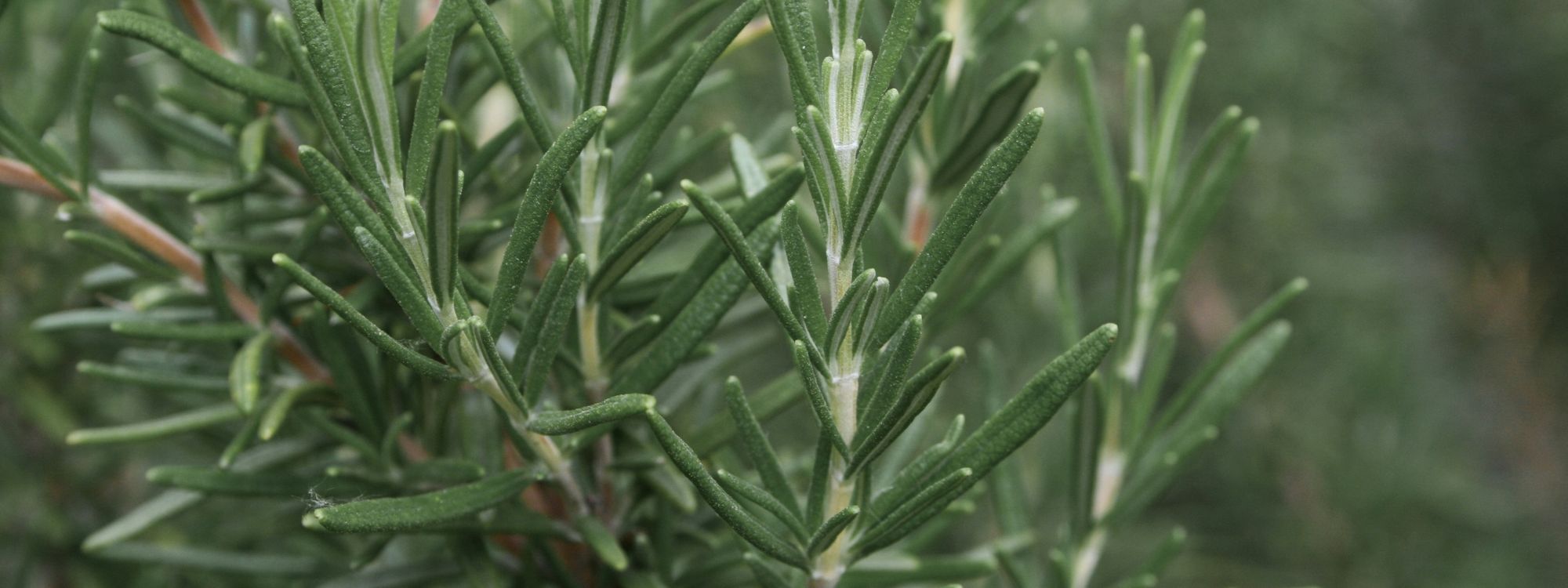
Rosemary, scientifically known as Rosmarinus officinalis, is an evergreen shrub belonging to the Lamiaceae family. It is a staple in the Mediterranean region and thrives in diverse climates, from sea level to altitudes up to 1200 meters. This versatile plant, which seldom exceeds 2 meters in height, is characterized by needle-like, leathery leaves that are dark green and shiny on top and velvety underneath.
The plant produces inflorescences in hues of blue-lilac or pinkish-white, depending on the climate. In warmer climates, rosemary blooms continuously, while in colder regions, the blooming period is from spring to late summer. The plant yields small, smooth, brown fruits known as tetrachenium.
.png)
Rosemary is renowned as an aromatic herb in the culinary world, thanks to its unique blend of borneol, bornyl acetate, cineole, α-pinene, and camphor. This herb is employed to augment the flavor of a wide variety of foods, including sauces, meats, and legumes. It is also used in beverages like wine, liqueurs, spirits, and vinegar.
.png)
The essential oil derived from rosemary, obtained through steam distillation of fresh sprigs, is a key component in phytotherapy. This oil is rich in borneol and esterified borneol, which are beneficial in alleviating digestive discomfort due to their spasmolytic action on the biliary tract and small intestine.
When applied topically in ointment form, rosemary essential oil can offer relief from rheumatism. The plant is also rich in phenolic acids, flavonoids, diterpenes, and triterpenes. These antioxidant compounds are abundant in rosemary extracts and aid in combating free radicals, acting as antimicrobials, and preserving lipids in foods and cosmetics from rancidity. The primary antioxidant factors in rosemary are carnosic acid and rosmarinic acid.
Rosemary's nutritional composition is primarily made up of water, proteins, and carbohydrates. It has a high concentration of soluble sugars and a significant amount of total lipids. The plant is cholesterol-free and provides 96.0 kcal of energy per 100g.
The herb is a rich source of essential minerals such as sodium, potassium, iron, calcium, and phosphorus. It also contains vitamins like Vitamin A and Vitamin C. The high concentration of these vitamins and minerals makes rosemary a nutrient-dense herb.
In addition to its nutritional benefits, rosemary has several therapeutic properties. It is known to have healing, stimulating, balsamic, and diuretic effects. It is beneficial in treating dysmenorrhea and respiratory system diseases. It is also used in the care of greasy hair and impure skin, making it a popular ingredient in the cosmetics industry. However, the use of rosemary essential oil should be avoided in cases of epilepsy, pregnancy, and hypersensitivity due to potential adverse reactions.
Rosemary is a hardy plant that thrives in various soil types and pH levels. The pH of the soil significantly influences the chemical composition of the essential oil produced by the plant. In more alkaline soils, the concentration of camphor in the oil increases.
Rosemary plants grown in fertile, nitrogen-rich soil tend to be lush but lack aromatic intensity. Conversely, plants grown in sandy, gravelly, and less watered soils, typical of coastal regions, develop a more robust bouquet.
Rosemary propagation can be done through seeds or cutting. While seeding takes about two years for rooting, cutting drastically reduces this time. The plants should be spaced approximately 1.5m apart in rows and 0.5m within the row. The average lifespan of a rosemary crop is around 5-6 years, although it can last up to 10 years. Rosemary plants are not tolerant of low temperatures.
In conclusion, rosemary is a versatile herb with a wide range of uses in the culinary, therapeutic, and cosmetic sectors. Its rich nutritional profile and therapeutic properties make it a valuable addition to our daily lives. However, as with any plant-based product, it should be used responsibly, considering potential contraindications and adverse reactions.